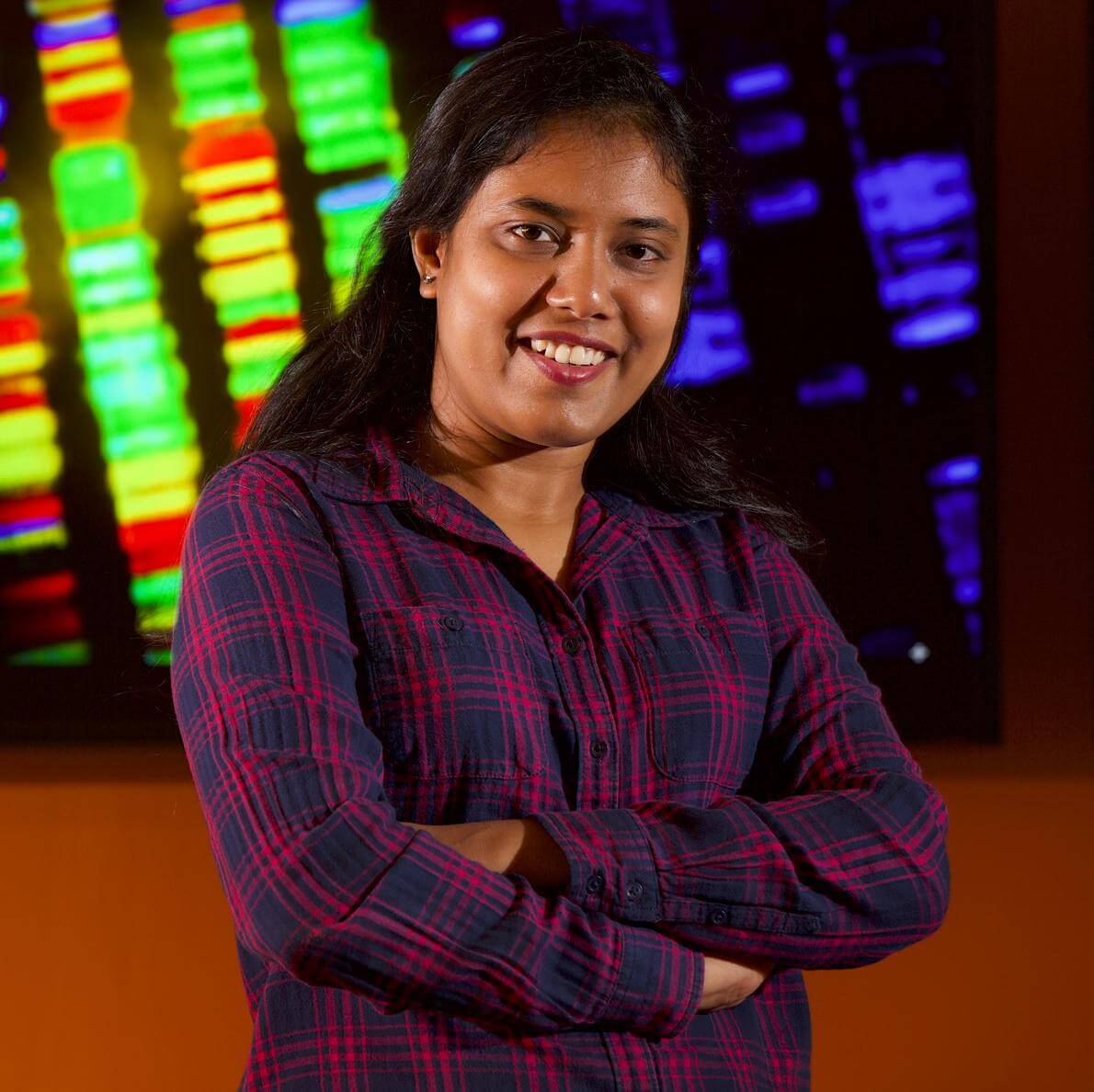 Nidhi Shah loves a good challenge and is inquisitive by nature, so it’s only fitting that she’s involved in an expanding scientific field where curiosity and determination are essential: metagenomics.
Nidhi Shah loves a good challenge and is inquisitive by nature, so it’s only fitting that she’s involved in an expanding scientific field where curiosity and determination are essential: metagenomics.
Shah, a second-year computer science doctoral student in the Center for Bioinformatics and Computational Biology (CBCB), is developing algorithms and software tools to unlock the mysteries of microbes, the tiny microorganisms that make up the majority of our planet’s living material.
Until the last decade or so, there were many unanswered questions surrounding microbes, mostly due to the fact that only a small percentage of them could be isolated and studied in a controlled lab environment.
Now, with advances in high-throughput DNA sequencing and other tools, scientists are able to take an environmental sample—whether from a hydrothermal vent or the gut of a sheep—sequence the DNA in it, and then piece together the genomes of any microbes that are present.
One of the biggest challenges in metagenomics is to annotate, or identify, which microorganism or gene that a specific DNA sequence originates from, which is where the research by Shah and other computational biologists comes into play.
“Annotating the sequences found in these samples is complicated work, but it’s important because it helps us not only understand the diversity of our environment, but also lets us better characterize a microbe’s functional capabilities,” Shah says. “This, in turn, can help us understand and have a positive impact on human health, agricultural yield, the environment, and more, by exploring these types of microbial dynamics.”
Helping Shah in her work are the vast computing resources available in CBCB, one the dozen-plus labs and centers in the University of Maryland Institute for Advanced Computer Studies (UMIACS).
“I use UMIACS’ computational resources extensively,” she says. “It’s practically impossible to run and test our algorithms and ideas for large-scale study samples on our [desktop] computers. So being able to quickly migrate workloads to the large-scale UMIACS data center lets me quickly make informed decisions about the capabilities of our sampling methods.”
Shah says that prior to coming to the University of Maryland, she had very little experience with computational biology. As an undergraduate majoring in information technology at the Veermata Jijabai Technological Institute in Mumbai, she studied computer science theory. When it came time to apply to graduate school, Shah searched for something that would be a “good mix” of both theory and application.
The cutting-edge research in metagenomics underway in CBCB seemed to be a good pathway to explore, she says.
At Maryland, Shah is working closely with her adviser, Mihai Pop, a professor of computer science who has a joint appointment in UMIACS.
Pop, an expert in metagenomics, says that Shah has made tremendous progress in her research over the past year, publishing her initial results in the recent Workshop on Algorithms in Bioinformatics (WABI 2017) held in Boston.
“We are already using the new approaches she has developed to study microbial communities from the guts of children from the developing world, as well as to study the impact of brain injury on the gastrointestinal track of mice,” Pop says. “Nidhi has strong technical skills, and an amazingly positive and thoughtful attitude—attributes that foretell an outstanding scientific career in graduate school and beyond.”
Although Shah doesn’t know exactly where her path will lead once her doctoral program is complete, she says that working in CBCB is not only teaching her computational biology, but is also providing the academic tools needed to become an independent researcher.
“Whatever field I end up working in, I want to be able to ask the right questions, and have the intuitive knowledge needed to answer those questions effectively,” she says. “Equally important is being able to communicate one’s research findings to the public. Working with all of the amazing research scientists, postdocs and other graduate students in CBCB is definitely helping me master these important skills.”
Computing & Health